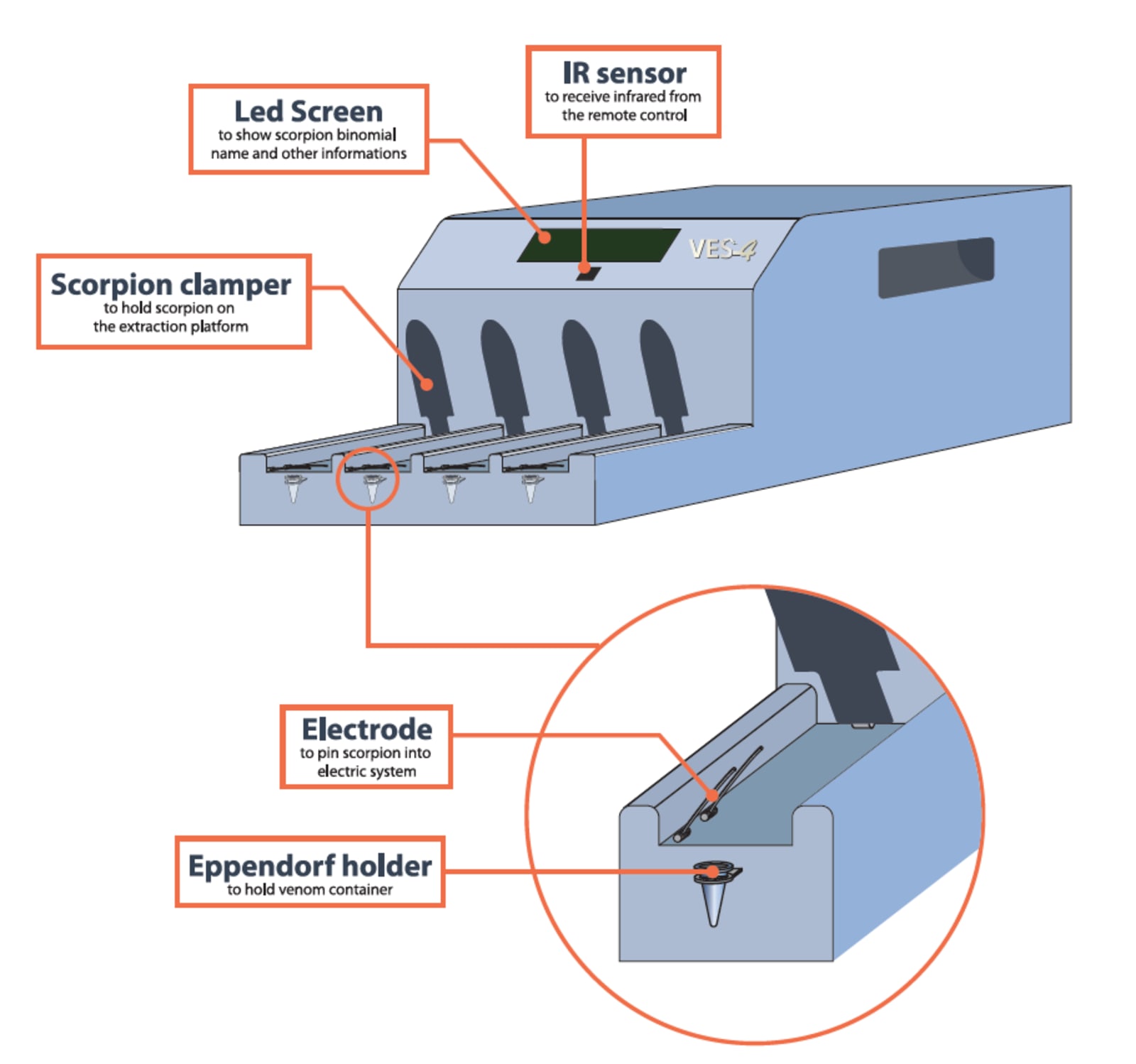|
Listen to this article  |

The VES-4 is a humane and safe way to extract scorpion venom. | Source: Ben M’sik Hassan II University
Scorpion venom is one of the most expensive liquids in the world, costing around $39 million a gallon.
The venom has important pharmaceutical uses. For example, the venom from the Deathstalker scorpion attaches itself to cancer cells. When mixed with a fluorescent dye, the venom lights up tumors. The venom can also be used as an immunosuppressant or an anti-malarial drug.
The uses of the venom, however, aren’t the only things driving up the price. To obtain a gallon of scorpion venom, you would need to milk 2.64 million scorpions.
Extracting the venom can be dangerous. Typically, scorpions are milked either by manual electric stimulation, mechanical stimulation or by puncturing the venom or abdominal gland of the scorpion. Scorpion farmers risk deadly scorpion stings as well as electric shocks from the stimulators used to extract venom.
In 2017, researchers at Ben M’sik Hassan II University made news by unveiling their scorpion milking robot, now they have received a patent for it. The scorpion milking robot, VES-4, provides a scorpion milking alternative that’s safe for scorpion farmers and the scorpions themselves.
VES-4 was developed by Mouad Mkamel, a researcher at the university, as well as Anass Kettani, Omar Tanane and Rachid Saile. It’s lightweight and portable, as Mkamel wanted the device to be used both in the lab and in the field.
The robot milks scorpions by holding down the tail of the animal and providing an electric current to produce droplets of venom. The venom is collected in an Eppendorf tube below the scorpion.
VES-4 can be programmed for different sizes of scorpions and is operated completely autonomously with a remote control. It’s equipped with an LED screen that displays information about the scorpion.
The teams’ patent approval is an important step in getting the robot out into the world.
Credit: Source link


Comments are closed.